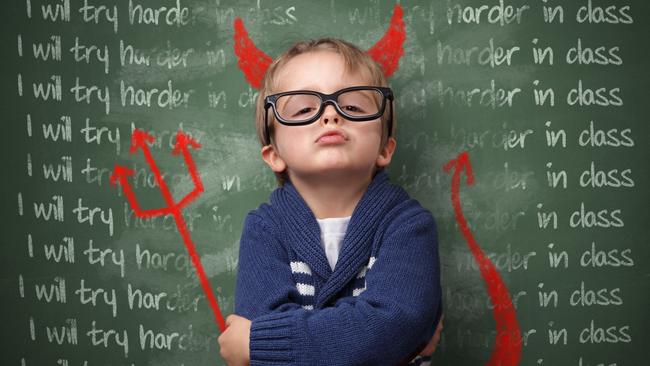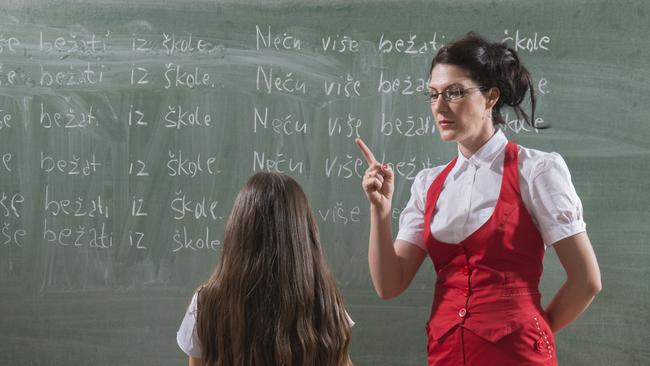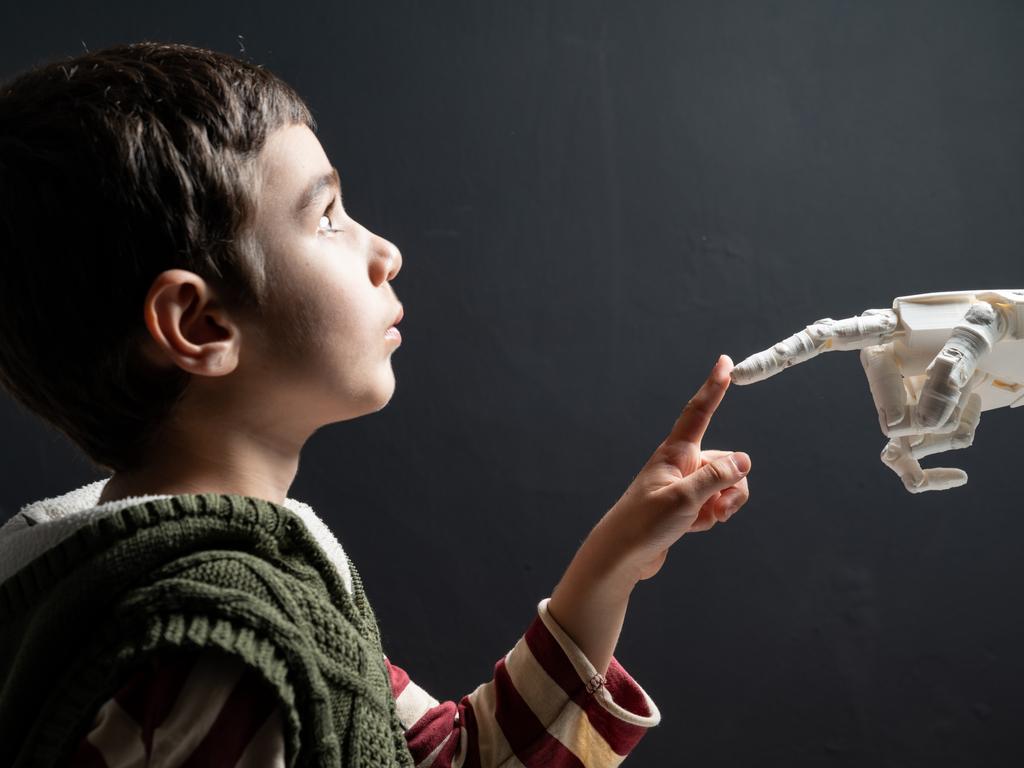A positive approach to lift kids’ classroom behaviour
A disciplinary environment is needed for children to learn but it’s not what you think.

Australian students are struggling to learn in some of the most disorderly classrooms in the world, a situation that is compromising the learning of millions of young people and forcing unprepared and disillusioned teachers to reconsider their chosen careers.
While concern has been mounting for some time about the nation’s sliding academic results on several international measures, it is only recently that the function of classroom disciplinary environment is attracting the attention it deserves.
This month, hearings resumed into the Senate’s Education and Employment Reference Committee inquiry into “the issue of increasing disruption in Australian school classrooms” that was announced last year in the wake of Australia’s declining ranking in the OECD disciplinary climate index.
We are now placed 69th out of 76 jurisdictions worldwide for classroom discipline, with almost one-half of Australian students surveyed reporting that they experience noise and disorder in most English classes.
About one-fifth say they cannot work well in class, while one-third claim their teacher has to wait a long time for students to quieten down before the lesson can start. So far the inquiry has heard from principals and teachers, representatives from different school systems, university education facilities, teachers unions and professional associations, academics, disability and inclusion advocates, and school councils and parents groups.
Together they have painted a picture of the modern school as an increasingly complex environment where teachers must grapple with snowballing expectations on meeting the social and emotional needs – in addition to the educational needs – of all their students.
While it’s true that schools are a microcosm of broader society, and it would be unfair and unrealistic to expect them to solve issues on their own, they are not powerless, particularly when it comes to improving the state of their classrooms.
As with learning to read, where most students require explicit and systematic teaching of the necessary skills, such as phonics, there is extensive evidence on how to support a structured classroom environment with fewer disruptions, enabling teachers to teach more effectively and students to concentrate on their work more easily.
While many Australians will be aware of MultiLit’s research, resources and programs in early literacy, thanks to widespread adoption by more than 6000 schools, they may be less familiar with the Positive Teaching and Learning approach that underpins our successful work.
Based on the extensive research from Macquarie University by emeritus professor Kevin Wheldall and me, and Frank Merrett from the Centre for Child Study at the University of Birmingham, Positive Teaching and Learning is based on a simple, incontrovertible premise: students must be ready to receive classroom instruction.

Teachers must actively plan for effective classroom management, student engagement and participation or learning will be adversely affected. Unfortunately, through no fault of their own, many teachers are not prepared for the realities of managing a classroom of students.
Initial teacher training in this area is typically inadequate and pre-service training programs lack explicit instruction and dedicated courses on effective classroom behaviour management practices.
Teachers often begin their careers with limited understanding of the science of behaviour and learning and how this relates to the practicalities of the classroom.
According to a survey conducted by Macquarie University, first-year primary teachers reported that they felt only partially prepared to manage trivial misbehaviour such as disruptions and noncompliance, and inadequately trained to manage aggressive, antisocial, conduct.
A Monash University study found that 24.5 per cent of teachers did not feel safe in their workplace, noting “wild and unpredictable” student behaviours including “punching, shouting, screaming, tantrums”.
Before we consider the practical solutions, we must address some unhelpful myths and misconceptions about classroom and behaviour management.
Some will insist the best way to fix classroom misbehaviour is having the teacher prepare and deliver more engaging lessons.
This is untrue because, as research shows, the relationship between learning and student engagement is far more complex and intertwined: it is learning and skill acquisition that supports a child’s sense of achievement and confidence, which encourages the engagement necessary that supports ongoing learning and skill acquisition. It goes without saying that an attempt to engage a student in a year 4 English lesson will be futile if that child is stuck reading at year 2 level.
It is also unrealistic as there will be times during a student’s schooling when they are required to learn and master necessary theory before they can get stuck into more engaging activities, such as science experiments.
Another damaging misconception is the conflation of discipline with punishment.
Maintaining classroom discipline is not about handing out detentions for classroom infractions but setting the scene that supports positive behaviour.
While most teachers are well aware of the importance of using praise and positive reinforcement strategies in their classrooms, our research found most teacher praise is focused on academic performance, with little praise for desirable classroom behaviour.
Moreover, teachers used more than three times as much disapproval as approval when commenting on students’ classroom behaviour when the ideal correction-to-praise ratio should be one-to-five (in favour of praise).
Equally, many teachers are unaware of the role “parallel praise” can play in improving student behaviour. If Johnny is not paying attention in class, the teacher will be better served praising the student sitting next to him for their concentration. Johnny is then much more likely to correct his own behaviour than if he were criticised.
Teachers’ physical proximity to students who need additional behaviour support also can affect behaviour positively, with the simple act of walking towards a student who is distracted and off-task found to cause that student to correct their behaviour.
Universities must lift their game regarding teaching pre-service teachers the science of behaviour and learning as well as proven and practical strategies to support them to manage large and complex classrooms. Training must extend to ongoing professional development once teachers enter the field.
Further, school leaders should adopt a whole-school approach to behaviour support where policies and procedures focus on preventive action to drive positive school culture and align practice with school values. Consistent approaches across classrooms ensure there is predictability and fairness for students on behavioural expectations reinforced over time.
It will also mean teachers feel they have the necessary support and backing from leadership to take the actions to support a positive classroom environment.
Helping schools to move from a reactive approach to a systematic, proactive approach will lead to calmer, happier and more positive learning environments, benefiting teachers and their students.
Robyn Wheldall is a founding director of MultiLit and has worked for more than 30 years in the areas of learning difficulties, special education, behaviour management and literacy instruction and interventions for struggling readers.






To join the conversation, please log in. Don't have an account? Register
Join the conversation, you are commenting as Logout